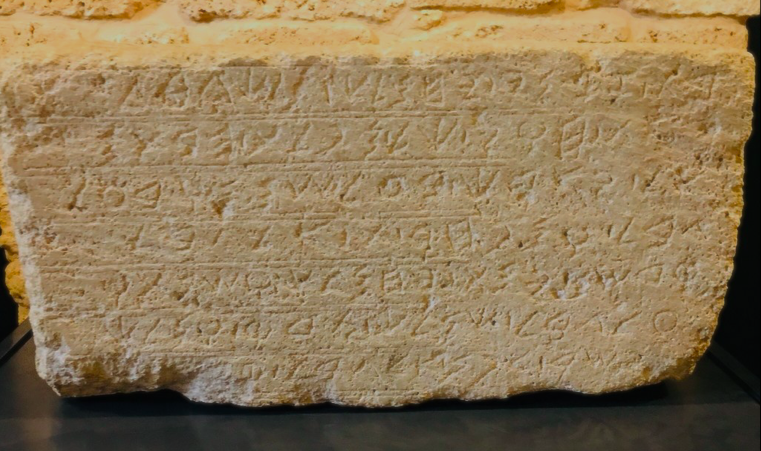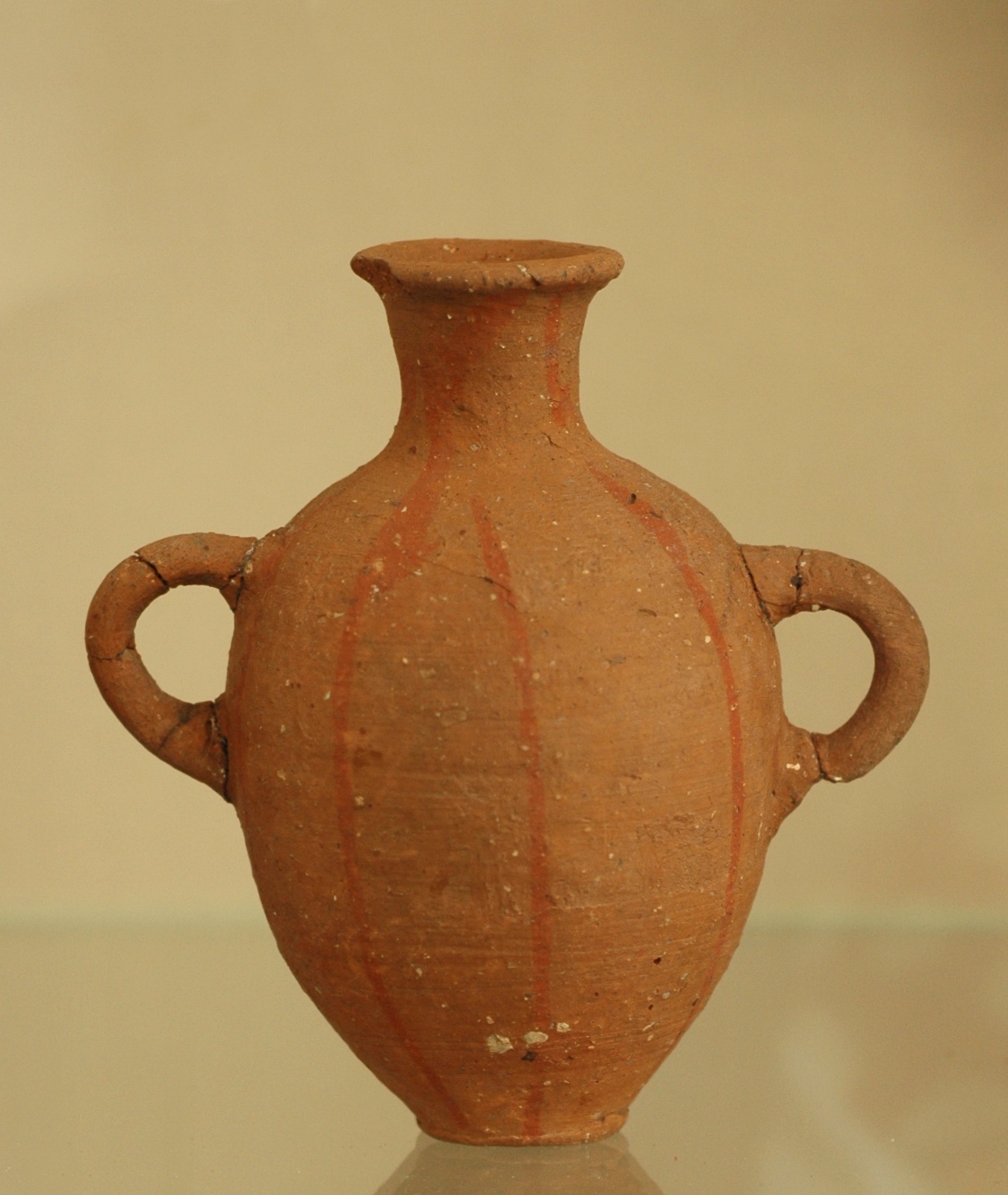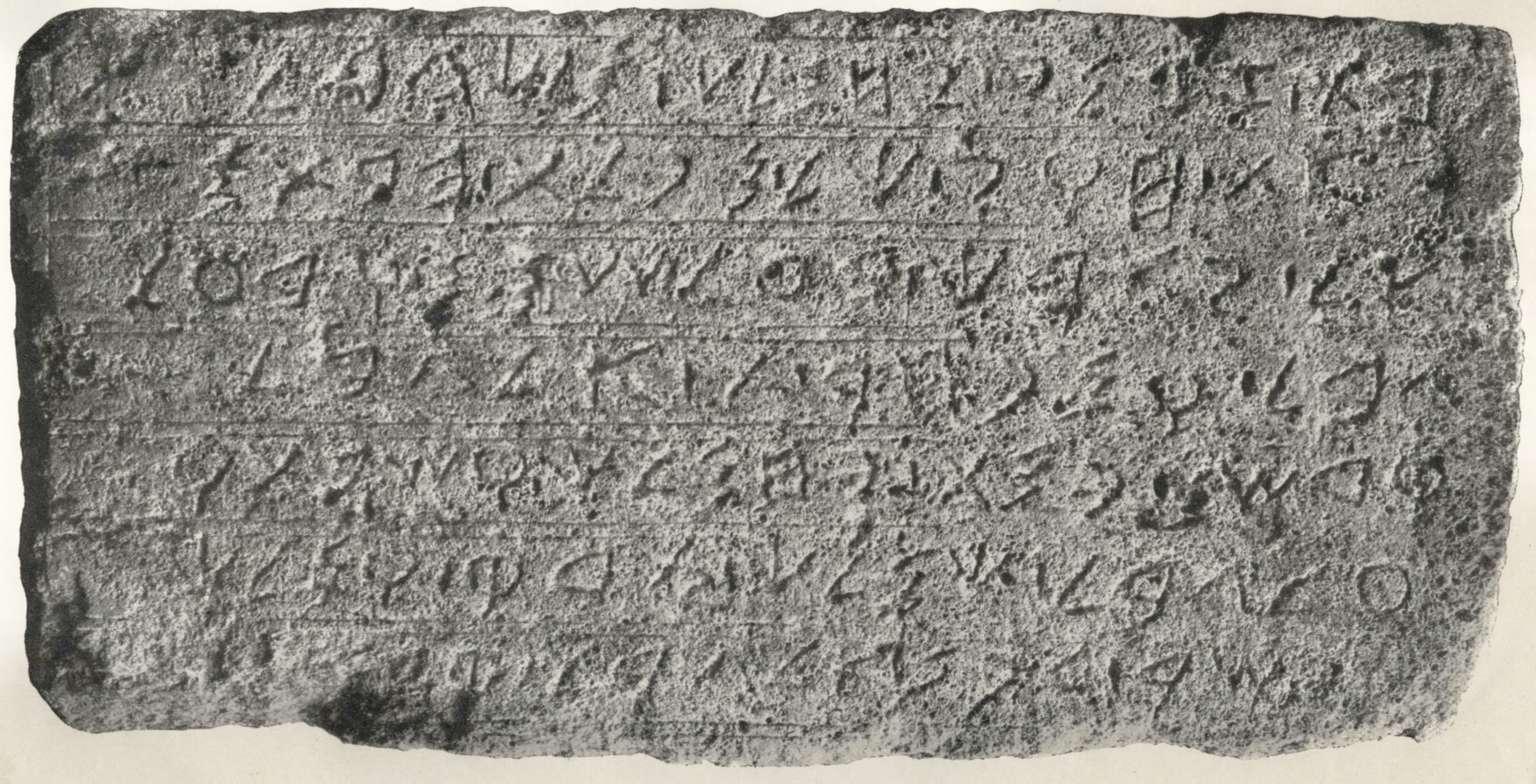|
Yehimilk Inscription
The Yehimilk inscription is a Phoenician inscription (KAI 4 or TSSI III 6) published in 1930, currently in the museum of Byblos Castle. It was published in Maurice Dunand's ''Fouilles de Byblos'' (volume I, 1926–1932, numbers 1141, plate XXXI). It is dated to the 10th century BCE, and contains the earliest known Phoenician reference to Baalshamin. Text of the inscription The inscription reads: Bibliography * Christopher Rollston,The Dating of the Early Royal Byblian Phoenician Inscriptions: A Response to Benjamin Sass" ''MAARAV'' 15 (2008): 57–93. * Benjamin Mazar, The Phoenician Inscriptions from Byblos and the Evolution of the Phoenician-Hebrew Alphabet, in The Early Biblical Period: Historical Studies (S. Ahituv and B. A. Levine, eds., Jerusalem: IES, 1986 riginal publication: 1946: 231–247. * William F. Albright William Foxwell Albright (May 24, 1891 – September 19, 1971) was an American archaeologist, biblical scholar, philologist, and expert ... [...More Info...] [...Related Items...] OR: [Wikipedia] [Google] [Baidu] |
Byblos
Byblos ( ; ), also known as Jebeil, Jbeil or Jubayl (, Lebanese Arabic, locally ), is an ancient city in the Keserwan-Jbeil Governorate of Lebanon. The area is believed to have been first settled between 8800 and 7000BC and continuously inhabited since 5000BC. During its history, Byblos was part of numerous cultures including Old Kingdom of Egypt, Egyptian, Phoenician, Assyrian, Achaemenid Empire, Persian, Hellenistic period, Hellenistic, Roman Empire, Roman, Genoese Republic, Genoese, Mamluk Sultanate, Mamluk and Ottoman Empire, Ottoman. Urbanisation is thought to have begun during the third millennium BC when it developed into a city, making it one of the List of oldest continuously inhabited cities, oldest cities in the world, if not the oldest. It is a UNESCO World Heritage Site. It was in Ancient Byblos that the Phoenician alphabet, likely the ancestor of the Greek alphabet, Greek, Latin and all other Western alphabets, was developed. Etymology The name appears as ''Keb ... [...More Info...] [...Related Items...] OR: [Wikipedia] [Google] [Baidu] |
Ba'alat, Lady Of Byblos
Baalat Gebal (, ''BʿLT GBL''; also romanized as Ba’alat Gebal or Baalat Gubal; literally "Lady of Byblos"), also known as Bēltu ša Gubla ( Akkadian: d NIN ''ša uruGub-la'') and Baaltis, was the tutelary goddess of the city of Byblos. While in the past it was often assumed her name is only an epithet, presently researchers assume that it is a proper name, meant to highlight her close connection to the corresponding city. She was identified with Hathor and later possibly with Isis by ancient Egyptians, and with Aphrodite by ancient Greeks. Philo of Byblos instead refers to her as "Dione", though the reasons behind this choice remain unknown. She was the main goddess in the local pantheon of Byblos, and a temple dedicated to her, which remained in use from the third millennium BCE to the Roman period, was located in the center of this city. She was venerated by the kings of Byblos, with a large number of references to her found in letters sent by Rib-Addi as a part of the ... [...More Info...] [...Related Items...] OR: [Wikipedia] [Google] [Baidu] |
Phoenician Inscriptions
The Canaanite and Aramaic inscriptions, also known as Northwest Semitic inscriptions, are the primary extra-Biblical source for understanding of the societies and histories of the ancient Phoenicians, Ancient Hebrews, Hebrews and Arameans. Semitic inscriptions may occur on stone slabs, pottery ostraca, ornaments, and range from simple names to full texts. The older inscriptions form a Canaanite languages, Canaanite–Aramaic dialect continuum, exemplified by writings which scholars have struggled to fit into either category, such as the Stele of Zakkur and the Deir Alla Inscription. The Northwest Semitic languages are a language group that contains the Aramaic, Aramaic language, as well as the Canaanite languages including Phoenician language, Phoenician and Hebrew language, Hebrew. Languages The old Aramaic period (850 to 612 BC) saw the production and dispersal of inscriptions due to the rise of the Arameans as a major force in Ancient Near East. Their language was adopted a ... [...More Info...] [...Related Items...] OR: [Wikipedia] [Google] [Baidu] |
Byblian Royal Inscriptions
The Byblian royal inscriptions are five inscriptions from Byblos written in an early type of Phoenician script, in the order of some of the kings of Byblos, all of which were discovered in the early 20th century. They constitute the largest corpus of lengthy Phoenician inscriptions from the area of the "Phoenician homeland"; it is the only major site in the region which has been excavated to pre-Hellenistic levels. The five royal inscriptions * The Ahiram Sarcophagus (KAI 1), discovered in 1923, together with two fragments of alabaster vases with the name of Ramesses II. Currently in the National Museum of Beirut. * The Yehimilk inscription (KAI 4) published in 1930. Currently in the museum of Byblos Castle. * The Abiba’l inscription (KAI 5), on a throne on which a statue of Sheshonq I was placed, found in 1895, published in 1903. Currently in the Vorderasiatisches Museum Berlin. * The Osorkon Bust or Eliba'l Inscription (KAI 6), inscribed on a statue of Osorkon I; know ... [...More Info...] [...Related Items...] OR: [Wikipedia] [Google] [Baidu] |
William F
William is a masculine given name of Germanic languages, Germanic origin. It became popular in England after the Norman Conquest, Norman conquest in 1066,All Things William"Meaning & Origin of the Name"/ref> and remained so throughout the Middle Ages and into the modern era. It is sometimes abbreviated "Wm." Shortened familiar versions in English include Will (given name), Will or Wil, Wills, Willy, Willie, Bill (given name), Bill, Billie (given name), Billie, and Billy (name), Billy. A common Irish people, Irish form is Liam. Scottish people, Scottish diminutives include Wull, Willie or Wullie (as in Oor Wullie). Female forms include Willa, Willemina, Wilma (given name), Wilma and Wilhelmina (given name), Wilhelmina. Etymology William is related to the German language, German given name ''Wilhelm''. Both ultimately descend from Proto-Germanic ''*Wiljahelmaz'', with a direct cognate also in the Old Norse name ''Vilhjalmr'' and a West Germanic borrowing into Medieval Latin ''Wil ... [...More Info...] [...Related Items...] OR: [Wikipedia] [Google] [Baidu] |
Benjamin Mazar
Benjamin Mazar (; born Binyamin Zeev Maisler, June 28, 1906 – September 9, 1995) was a pioneering Israeli historian, recognized as the "dean" of biblical archaeologists. He shared the national passion for the archaeology of Israel that also attracts considerable international interest due to the region's biblical links. He is known for his excavations at the most significant biblical site in Israel: south and south west of the Temple Mount in Jerusalem. In 1932 he conducted the first archaeological excavation under Jewish auspices in Israel at Beit She'arim (the largest catacombs ever found in Israel) and in 1948 was the first archaeologist to receive a permit granted by the new State of Israel (Tell Qasile, 1948). Mazar was trained as an Assyriologist and was an expert on biblical history, authoring more than 100 publications on the subject. He developed the field of historical geography of Israel. For decades he served as the chairman of the Israel Exploration Society and o ... [...More Info...] [...Related Items...] OR: [Wikipedia] [Google] [Baidu] |
Christopher Rollston
Prof. Christopher A. Rollston (born in Michigan, United States) is a scholar of the ancient Near East, specializing in Hebrew Bible, Greek New Testament, Old Testament Apocrypha, Northwest Semitic literature, epigraphy and paleography. Biography Rollston holds an MA and Ph.D. from Johns Hopkins University Department of Near Eastern Studies. He also holds an MAR from Emmanuel School of Religion (now known as Emmanuel Christian Seminary), and an undergraduate degree from Great Lakes Christian College. Rollston is a member of Phi Beta Kappa society. He is Professor of Northwest Semitic Languages and Literatures at George Washington University and is chair of the department of Classical and Near Eastern Languages and Civilizations there. He has been a National Endowment for the Humanities Research Scholar at the Albright Institute of Archaeological Research in Jerusalem (Fall 2013) and also at the American Center of Oriental Research in Amman (Summer 2002). He was a Visiting Prof ... [...More Info...] [...Related Items...] OR: [Wikipedia] [Google] [Baidu] |
Kanaanäische Und Aramäische Inschriften
Kanaanäische und Aramäische Inschriften (in English, Canaanite and Aramaic Inscriptions), or KAI, is the standard source for the original text of Canaanite and Aramaic inscriptions not contained in the Hebrew Bible. It was first published from 1960 to 1964 in three volumes by the German orientalists Herbert Donner and Wolfgang Röllig, and has been updated in numerous subsequent editions. The work attempted to "integrate philology, palaeography and cultural history" in the commented re-editing of a selection of Canaanite and Aramaic Inscriptions, using the "pertinent source material for the Phoenician, Punic, Moabite, pre-exile-Hebrew and Ancient Aramaic cultures." Röllig and Donner had the support of William F. Albright in Baltimore, James Germain Février in Paris and Giorgio Levi Della Vida in Rome during the compilation of the first edition. Editions The 4th edition was published between 1966 and 1969, and a 5th edition was published in 2002. However, the 5th edit ... [...More Info...] [...Related Items...] OR: [Wikipedia] [Google] [Baidu] |
Keserwan-Jbeil Governorate
Keserwan-Jbeil () is the most recently created governorate of Lebanon. It consists of the districts of Jbeil and Keserwan. Keserwan-Jbeil covers an area of and is bounded by the North Governorate to the north, the Baalbek-Hermel Governorate to the east, the Mount Lebanon Governorate to the south, and the Mediterranean Sea to the west. The capital is at Jounieh. As of the end of 2017, the combined population of the districts of Jbeil and Keserwan was estimated to be 282,222. Maronites comprise a large majority of the population in the governorate, while Shiites are the next largest confessional group. In the 2018 Lebanese general election, Jbeil and Keserwan formed the Mount Lebanon I electoral district which was allotted eight parliamentary seats in total, seven Maronite and one Shia. A proposal to separate the districts of Jbeil and Keserwan from Mount Lebanon Governorate was first submitted to Parliament in 2003. The new governorate was finally established by the gazetting ... [...More Info...] [...Related Items...] OR: [Wikipedia] [Google] [Baidu] |
Baalshamin
Baalshamin (), also called Baal Shamem () and Baal Shamaim (), was a Northwest Semitic god and a title applied to different gods at different places or times in ancient Middle Eastern inscriptions, especially in Canaan/Phoenicia and Syria. The title was most often applied to Hadad, who is also often titled just Ba‘al. Baalshamin was one of the two supreme gods and the sky god of pre-Islamic Palmyra in ancient Syria ( Bel being the other supreme god). There his attributes were the eagle and the lightning bolt, and he perhaps formed a triad with the lunar god Aglibol and the sun god Malakbel. The title was also applied to Zeus. The earliest known Phoenician reference to Baalshamin is in the Yehimilk inscription, dated to the 10th century BCE. History This name was originally a title of Baal Hadad, in the 2nd millennium BC, but came to designate a distinct god circa 1000 BC. The earliest known mention of this god or title is in a treaty of the 14th century BC between Suppil ... [...More Info...] [...Related Items...] OR: [Wikipedia] [Google] [Baidu] |
Bibliothèque Nationale De France
The (; BnF) is the national library of France, located in Paris on two main sites, ''Richelieu'' and ''François-Mitterrand''. It is the national repository of all that is published in France. Some of its extensive collections, including books and manuscripts but also precious objects and artworks, are on display at the BnF Museum (formerly known as the ) on the Richelieu site. The National Library of France is a public establishment under the supervision of the Ministry of Culture. Its mission is to constitute collections, especially the copies of works published in France that must, by law, be deposited there, conserve them, and make them available to the public. It produces a reference catalogue, cooperates with other national and international establishments, as well as participates in research programs. History The National Library of France traces its origin to the royal library founded at the Louvre Palace by Charles V in 1368. Charles had received a collection o ... [...More Info...] [...Related Items...] OR: [Wikipedia] [Google] [Baidu] |






